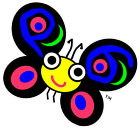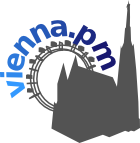From metabolic modeling to tissue engineering - Systems biology with Perl
From metabolic modeling to tissue engineering - Systems biology with Perl
By Christian Jungreuthmayer
Datum: Freitag Oktober 10, 2014 11:10
Dauer: 40 Minuten
Target audience: Jedes
Language: English
Tags: biology engineering metabolic modeling perl systems tissue
Systems biology is an established field of biology-based research that combines approaches of multiple scientific areas, such as molecular biology, biomechanics, mathematics, systems theory, and computer science. Because of the complexity of the investigated biological systems, analytical methods are often only of limited use in systems biology. When analytical approaches fail, computer simulations are usually applied to gain further insight into the systems of interest. Although Perl is not a programming language that is known for its strengths in real-time or high-performance applications, Perl can be of invaluable help in numerical simulations. In particular, Perl is excellently suited for pre- and post-processing tasks, and for developing proof-of-principle applications of new numerical methods.
Furthermore, Perl is also a great tool to implement wrapper programs to offer an easy and fail-proof access to specialized libraries and to automatize the execution of large sets of simulations which analyze the behavior of systems for huge parameter sets.
In my talk I am planning to present some examples of how Perl has been successfully applied to enable the execution of numerical simulations in the field of systems biology:
a) An object oriented Perl program that 'computationally seeds' stem cells on the numerical representation of a protein scaffold.
This scaffold was used to simulate the physical properties which occur in a flow perfusion bioreactor that is used to grow artificial human bone tissue.
b) A Perl program that is used to compute the best genetic intervention strategy which transforms microorganisms into efficient produces of biofuel (e.g. ethanol) and pharmaceuticals.
c) A Perl program that automatizes the computations of the dielectric properties of lab-on-a-chip systems in order to optimize their sensitivity to detect biological cells.
Attended by: Michael Kröll (pepl), Markus Förster, Thomas Heine, David Schmidt (davewood), Markus Hechenberger (Hechi), Christian Jungreuthmayer, Stefan Seifert (Nine), Johann Rolschewski (jorol), Nina Bieringer, Sebastian Hofer, Ernst Lammer, Elizabeth Mattijsen (liz), Leon Timmermans (leont), Timo Paulssen (timotimo), Wendy Van Dijk (woolfy),






